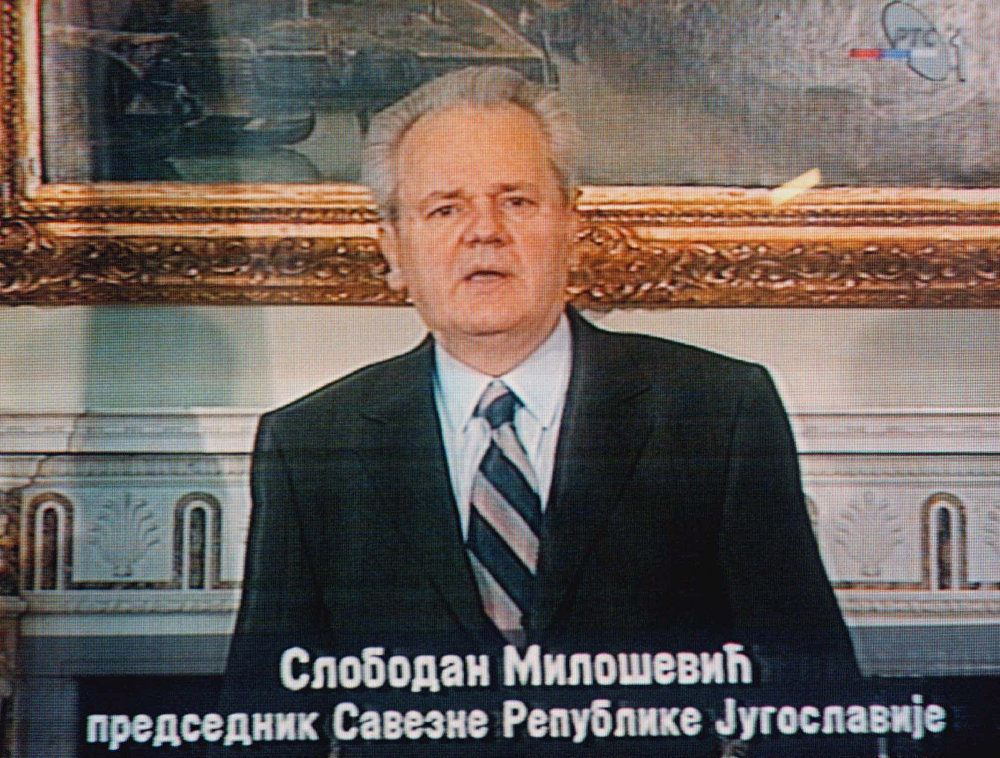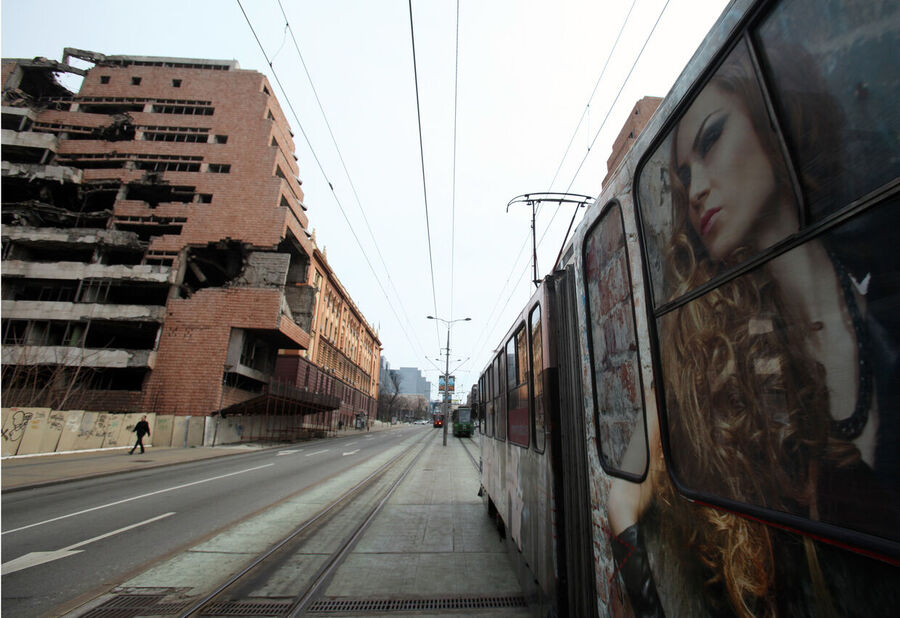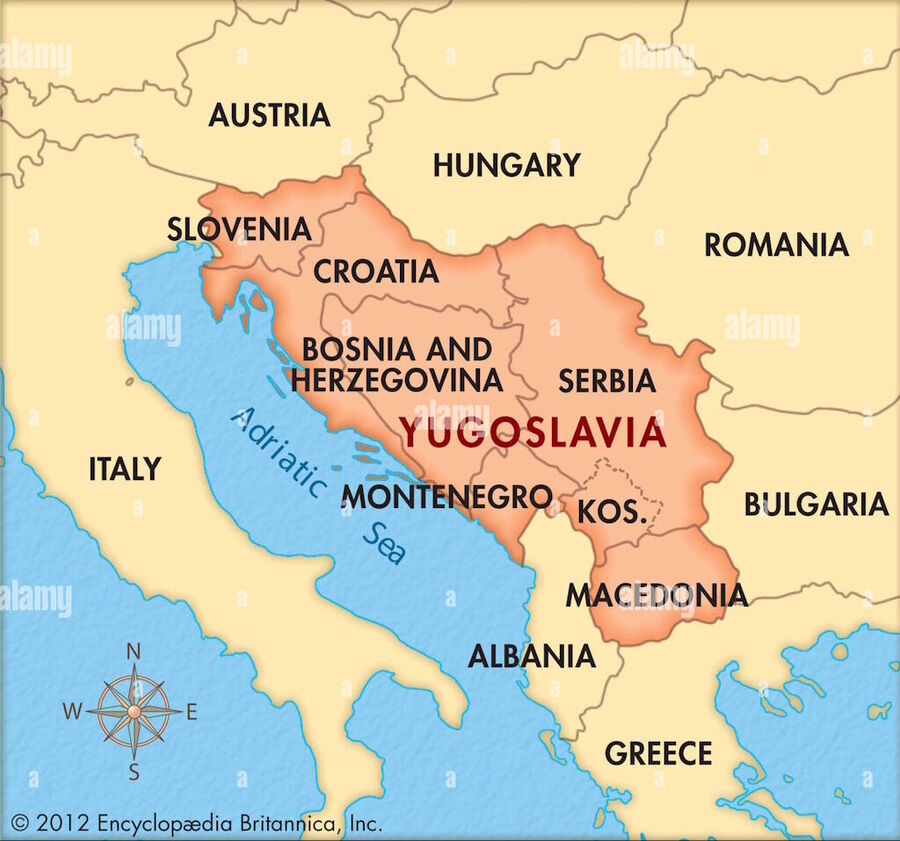
On the evening of March 24, 1999, student Elena Milincic was at home with her sister and a friend in Belgrade. Suddenly, the quiet evening was interrupted by an air-raid siren. The girls quickly hid under the table. It wasn't the safest place, but they got lucky - their part of the city wasn't attacked. Over the next 77 days, these girls and other Belgrade residents got a lot better at hiding from the bombs which threatened to kill them every day. The bombing was part of NATO's military operation against Yugoslavia - the campaign that shook up the world order, and not just in the Balkans.
Preconditions for bloodshed
The Kosovo problem goes back many centuries. Located in the southwest of Serbia on the border with Albania, the Kosovo region was historically inhabited by two Balkan peoples: Serbs and Albanians. The Serbs consider the region a major part of the country's history and culture. However, Albanians have also lived there for centuries.
By the mid-19th century, there were about as many Albanians as Serbs in Kosovo. Ethnic strife was a common problem in the Balkans. Retaining their particular cultural characteristics, Serbs, Albanians, Croats, Gypsies, and Muslim Serbs lived side by side for centuries. Conflicts between them, nonetheless, resulted in brutal massacres.
During WWII, the Balkans were occupied by Germany and Italy, and a brutal regime was established in Kosovo. Serbs were expelled from the region and many were killed. After the war, Josip Broz Tito came to power in Yugoslavia and put more wood on the fire. He did not allow Serbian refugees to return to the region and wanted to use Kosovo to pressure Albania. He hoped that the region would become a "bridge" between the two countries. However, the plan fell through and the area continued to become more "Albanian".
By the time Yugoslavia collapsed, Kosovo's population consisted of about 75% Albanians and 20% Serbs. The rest were Gypsies and other minorities.
Many Albanian nationalist organizations emerged in the 1980s. At first, they committed minor offenses against the Serbian population, like arson, beatings, threats, graffiti, and so on. However, from the '90s, Kosovo undertook active attempts to break away from Yugoslavia, and Kosovo Albanians gravitated towards Albania. During Tito's rule (1945-80), the region's nationalist intelligentsia considerably increased in number and laid the ideological grounds for secession projects. Ibrahim Rugova became a prominent Kosovo Albanian leader. He graduated from the University of Prishtina, which was established under Yugoslavia and became the headquarters of nationalist-minded Kosovo Albanian intellectuals. Rugova himself didn't advocate political violence but became the face of a movement that eventually turned radical and violent.
In 1991, Kosovo held an independence referendum and presidential elections. Yugoslavia did not recognize the new state but, factually, the region had broken away. In 1996, an army was formed called the Kosovo Liberation Army (KLA), which launched a full-fledged guerrilla-terrorist war against the Serbs. By 1998, Belgrade realized that it had lost control over the situation and launched a military operation against Kosovo.
Guerrilla warfare
Western media covered this small-scale yet brutal war in a surprisingly one-sided manner. The operation conducted by Serbian security forces was indeed violent, but we need to keep in mind that they fought against a terrorist group. However, people in Europe and the US were only shown how violent Serbian nationalists killed peaceful Albanian peasants. EU and US officials pressured Belgrade to stop the bloodshed. No one made the same demands in regard to KLA militants or complained that Albania was pumping Kosovo with weapons and training militants. The West was determined to dismantle Yugoslavia, so it supported the separatists. The MPRI Private Military Company, which had earlier helped train Croatian armed forces in their fight against the Serbs, soon took over the training of terrorists.


The battle in Račak is an example of the tragic drama that unfolds in the course of guerilla warfare, and is quite common for counter-insurgency (COIN) operations. In such situations, there's no way to establish the truth. However, in the spring of 1999, Western politicians presented the tragedy in Račak as a massacre that demanded an immediate response from the international community.
At negotiations in Rambouillet, Serbian and Albanian delegations were not able to come to an agreement. The Serbs were ready for a ceasefire and agreed to grant Kosovo autonomous status, but did not want a foreign military contingent on its territory. In response, NATO accused the Serbs of disrupting the negotiations. Yugoslavia and Milosevic were vilified in the press, and NATO started preparing a military operation. The UN Security Council did not sanction the use of military force but, most likely, one of the goals of the operation was to demonstrate NATO's readiness to act without the approval of the international community. Milosevic was told to immediately withdraw Serbian forces from Kosovo and transfer control of the region to NATO's international contingent. This time, the demands were backed by military force.
Air and ground
NATO bombings of Yugoslavia started on March 24, 1999. Of course, the US played the key role in the operation, but a total of 13 countries were involved in it. The Alliance did not plan to conduct a ground operation, but made extensive use of its air force and cruise missiles to attack the country.
The forces were incomparable: NATO utilized over 1,000 planes and helicopters, mainly from military bases in Italy and the aircraft carrier USS Theodore Roosevelt. The KLA had several thousand fighters, but the combat capability of these units was quite low.
Compared to NATO's air fleet, Yugoslavia's forces were quite weak. The air force had only 11 relatively modern fighter aircraft and several outdated missile defense systems that had been supplied by the USSR a long time ago.
The Alliance started the operation by launching several dozen Tomahawk cruise missiles. Then the attack aircraft started dropping bombs. The first goal was to suppress the Yugoslav missile defense system. The strikes were successful. Serbian anti-aircraft gunners tried their best to fight enemy forces. For example, air defense officer Zoltan Dani was able to shoot down an inconspicuous and theoretically "invisible" F117 stealth-attack aircraft. However, these minor victories could not change the course of the operation. The Serbs could only act from the ground and sporadically attacked enemy aircraft using air defense systems. Serbian pilots even tried to attack the enemy using fighter aircraft - this was indeed a courageous feat, but practically useless from a military point of view. In the entire course of the operation, NATO lost only three aircraft and two helicopters.
After the missile defense systems were suppressed, NATO resorted to terrorist-style bombings. The attacks on the troops weren't very effective and the Yugoslav units retained their combat capability until the end of the war. About thirty combat vehicles were destroyed and several hundred Serbian soldiers and officers were killed and wounded. Considering the fact that over 90,000 servicemen and police officers were stationed in Kosovo and another 65,000 defended the rest of the country, the losses were not very great. In other words, NATO strikes disabled the Air Force and air defense systems, but didn't affect the combat capability of the troops in a major way.
Civilian infrastructure, however, suffered major damage as a result of the NATO bombings, since it was a lot harder to conceal a bridge or a TV tower than a tank. Bridges, industrial facilities, and telecommunications systems were attacked every day. Even targets that were not considered strategically important for NATO were often hit by mistake. For example, on April 14, an F16 fighter jet attacked a convoy of civilian Albanian refugees near Gjakove. Another time, a sniper strike killed 73 people. And when an intelligent munitions system tried to find military equipment at the Chinese embassy, three people were killed. According to various sources, the number of victims varies from 500 to 5,700 people. Many buildings in Belgrade remain ruined to this day.

Dubious achievements
At the time, Russia was undergoing very difficult economic times and its support of Yugoslavia was reduced to symbolic gestures. After the start of the air raids, the Parliament of Yugoslavia wanted to join the union between Russia and Belarus, but Russian President Boris Yeltsin blocked this initiative. Thousands of people protested at the US Embassy in Moscow every day. Once, an activist even brought a grenade launcher and tried to (unsuccessfully) attack the embassy. Unfortunately, apart from protesting and loudly condemning the events, there was nothing Russia could do.
In those years, Russia's economy was in shreds and, unlike today, this wasn't just a story made up by Western politicians and media. At that time, the economic crisis was real, and the army had suffered a humiliating defeat in Chechnya. There was really nothing Russia could do to prevent NATO's operation.
On June 1, Milosevic agreed to all of NATO's demands. The Alliance's peacekeeping forces entered Kosovo and Serbian troops withdrew from the region.
As Yugoslav troops withdrew from Kosovo, ethnic cleansing began. In the coming months, over 1,700 people (almost all of them Serbs or representatives of other national minorities) were killed by militants or went missing. The majority of the remaining Serbs fled - according to various sources, between 200,000 and 350,000 people left the region, including Serbs and the remaining Gypsies. KLA militants smashed cultural monuments, burned down churches, and destroyed anything that reminded them of the enemy.
As for NATO troops, they did not prevent or stop this purge in any way. Today, some Serbs still remain in Kosovo, most living in a small enclave by the Serbian border.
Negotiations on the status of the region did not yield any results for several years. In 2008, Kosovo declared independence, and has been recognized as an independent republic by most Western states.
Unsurprisingly, problems in the region did not end with the expulsion of the Serbs. To this day, Kosovo is a poor country with major corruption issues. The US took an active part in the reconstruction of Kosovo, but the region was mostly used by businessmen and officials for personal enrichment. Many of them have profited from murky schemes, including former US Secretary of State Madeleine Albright, who owned a share of the only private mobile network operator in the region, and later tried to grab a piece of a state-owned company. Coincidentally, Albright's daughter is the executive director of a corporation that distributes development grants to poor countries (including Kosovo). In Kosovo, there are 800,000 migrant workers per 1,800,000 inhabitants. Moreover, the republic has turned into a stronghold of the Albanian mafia. Even the Western press was forced to admit the failed state-building attempt in Kosovo.
A few years after the events of 1999, Montenegro peacefully broke away from Yugoslavia, and the latter ceased to exist. President Slobodan Milosevic was overthrown in 2000 as a result of unrest in Belgrade and was secretly extradited to the international criminal tribunal in the Hague. In 2006, before the trial's conclusion, he died age 64 in the UN prison there and immediately suspicions were raised, which have persisted, over how he died.
Comment:
- What FOIA CIA files say about Milosevic, intelligence, declassification: Information is doctored to align with foreign policy whims
- Milosevic vindicated: ICTY exonerates assassinated leader for war crimes, says he wanted peace - no news media covering the story
- NATO exonerates Slobedan Milosevic - 11 years after they killed him
What conclusions did the world draw?
The bombing of Yugoslavia was an important and, apparently, highly underestimated turning point in relations between Russia and the West. Both the Russian elite and society painfully reacted to the tragic events in Yugoslavia. This may sound strange, but Russia once harbored idealistic sentiments about the great Western democracies. When the Cold War ended, it seemed that the US and NATO were unfairly slandered by Soviet propaganda. Unfortunately, there was a lot of truth to the Soviet propaganda. For Russia, it was quite painful to realize that world politics still resembled an aquarium full of hungry sharks. Moreover, Russia traditionally had close and friendly relations with Serbia and the Serbian people. But now the Serbs were publicly attacked and humiliated.
The elites had their own reasons for concern. The Kremlin regarded Russia-US and Russia-West relations in an idealistic way. But, in 1999, Moscow clearly saw that international law doesn't provide any guarantees on the global arena. Yugoslavia was destroyed without any serious grounds, simply because Western politicians had decided so. The country lost part of its territory and the cut-off enclave was subjected to ethnic cleansing while the world turned a blind eye. And all this was done under the guise of a "rules-based international order." Territorial integrity was considered one of the inviolable principles of international law but it, too, was trampled. Moreover, in the general context of the Balkan wars and conflicts, all the blame was put on Yugoslavia/Serbia, regardless of whether the Serbs were rebels who fought against the government or vice versa. None of this resembled justice or law. It became clear that neither agreements nor international law could protect any country, including Russia, from external military force, and that countries could only rely on the political situation and their own ability to cope with threats.
This realization was doubly important since Russia had a similar problem with Islamist insurgents in Chechnya. The Kremlin could not help but think that, if the West could use this pretext to attack Yugoslavia, it could use the same strategy against Russia. On the other hand, Moscow came to the reasonable conclusion that if an arbitrator twists the rules as he likes, he loses authority. The sarcastic expression "You don't understand, this case is different" - which implies the hypocrisy of those who condemn others for certain actions while engaging in condemned behavior - remains popular on Russian internet to this day. For the Russian political elite, Kosovo became a classic example of a "different case." Western journalists and politicians often emphasized that the situation in Kosovo was unique. However, the ill-fated region was obviously no different from dozens of other hotspots. Why was Kosovo a "special case"? Why weren't Transnistria, South Ossetia, Abkhazia, Nagorno-Karabakh, Serbian Krajina, or Catalonia just as exceptional? What other situations will be considered "special," and what other conflicts between authorities and separatists will be sufficient grounds for NATO to carry out bombings and allow ethnic cleansing?
The bombing of Belgrade destroyed the image of a new "rules-based international order." Of course, it wasn't the last time that the rule of law and the demands of justice were ignored by the great world powers after the collapse of the Soviet Union - in fact, the bloody Iraq war followed only four years later. However, the events in Yugoslavia had clearly demonstrated that a country that wants to protect its sovereignty from external threats can only rely on its own strength and on proven allies.




Comment: